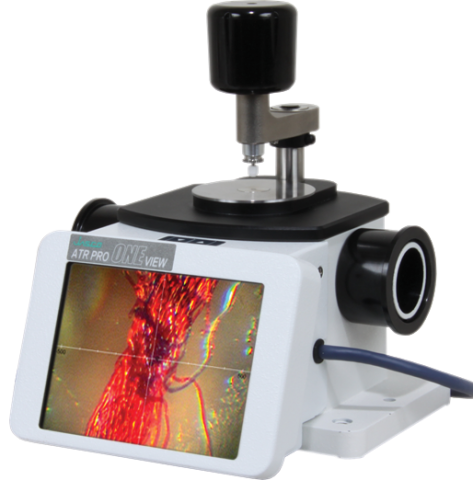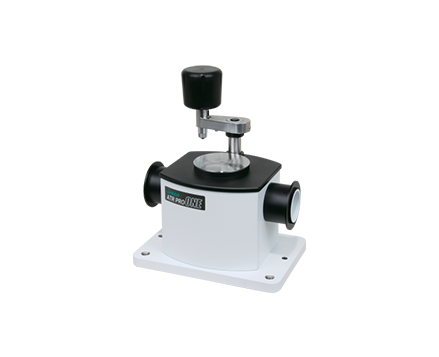ATR Prism Selection Criteria
January 4, 2024
Introduction

ATR method is used to analyze the sample surface within 1~2 μm in depth. The measurement is collected when the ATR prism is in contact with the sample. In ATR method, the penetration depth of light into the sample for total reflection depends on the RI of prism and sample, incidence angle and wavelength. In addition, measurement range and durability depend on the material of the prism. Features of each prism are shown as follows.
| Prism | RI (n1) | Penetration Depth dp*1 (1000cm-1) | RI of Sample (n2)*2 for Total Reflection | Measurement Limit in Low Wavenumber*3 Range |
| ZnSe | 2.4 | ~ 2.0 μm | <= 1.7 | ~550 cm-1 |
| Diamond | 2.4 | ~ 2.0 μm | <= 1.7 | ~400 cm-1 *4 |
| Ge | 4.0 | ~ 2.0 μm | <= 2.8 | ~650 cm-1 |
| Prism | Feature of Prism | Suitable Sample | Non-Suitable Sample | Notes |
| ZnSe | Good throughput | General organic substance | Hard powder, acidalkaline, high RI sample | In case of hard powder or hubbly sample, diamond is recommended |
| Diamond | Intensity, durability, measurement | Hard powder, General organic substance | High RI sample | Poor S/N ratio in the region around 2000 cm-1, due to internal absorption |
| Ge | Analysis for high RI sample | Sample including carbon | Hard powder, acidalkaline | Weak absorption due to small depth of penetration |
*3 Case of measurement using ATR PRO 450-S, standard FTIR.
*4 If the measurement is needed in the wavenumber range below 400 cm-1, please contact local JASCO distributor.
Keywords
280-AT-0003, ATR, prism, diamond, Ge, ZnSe, refractive index
Featured Products:

ATR Prism Selection Criteria
Introduction

ATR method is used to analyze the sample surface within 1~2 μm in depth. The measurement is collected when the ATR prism is in contact with the sample. In ATR method, the penetration depth of light into the sample for total reflection depends on the RI of prism and sample, incidence angle and wavelength. In addition, measurement range and durability depend on the material of the prism. Features of each prism are shown as follows.
| Prism | RI (n1) | Penetration Depth dp*1 (1000cm-1) | RI of Sample (n2)*2 for Total Reflection | Measurement Limit in Low Wavenumber*3 Range |
| ZnSe | 2.4 | ~ 2.0 μm | <= 1.7 | ~550 cm-1 |
| Diamond | 2.4 | ~ 2.0 μm | <= 1.7 | ~400 cm-1 *4 |
| Ge | 4.0 | ~ 2.0 μm | <= 2.8 | ~650 cm-1 |
| Prism | Feature of Prism | Suitable Sample | Non-Suitable Sample | Notes |
| ZnSe | Good throughput | General organic substance | Hard powder, acidalkaline, high RI sample | In case of hard powder or hubbly sample, diamond is recommended |
| Diamond | Intensity, durability, measurement | Hard powder, General organic substance | High RI sample | Poor S/N ratio in the region around 2000 cm-1, due to internal absorption |
| Ge | Analysis for high RI sample | Sample including carbon | Hard powder, acidalkaline | Weak absorption due to small depth of penetration |
*3 Case of measurement using ATR PRO 450-S, standard FTIR.
*4 If the measurement is needed in the wavenumber range below 400 cm-1, please contact local JASCO distributor.
Keywords
280-AT-0003, ATR, prism, diamond, Ge, ZnSe, refractive index

 Download This Application
Download This Application


